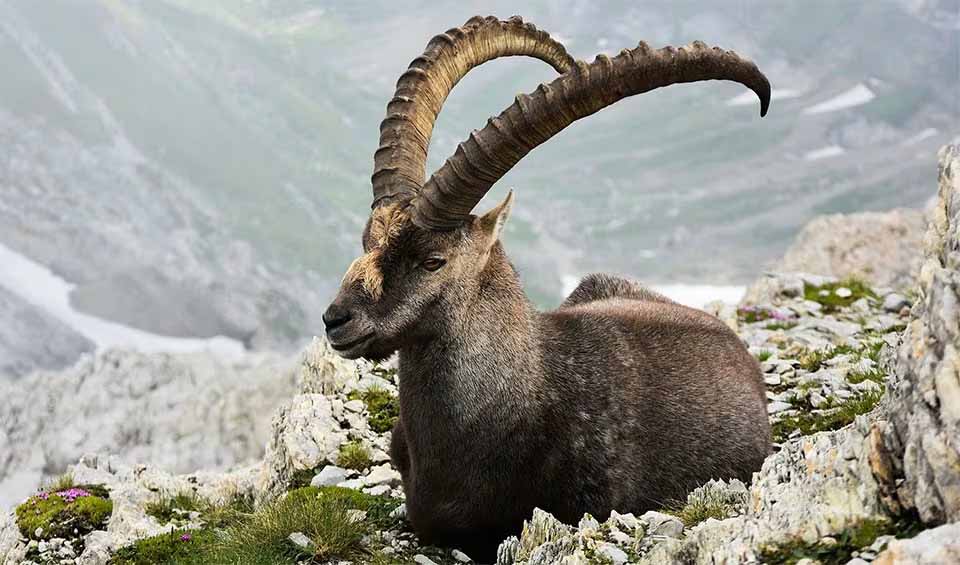These majestic animals are known for their impressive curved horns, which can grow up to a meter long in males. Females also have horns, but they are much shorter and thinner. Both sexes use their horns for various purposes, such as foraging for food, digging in the snow, and fighting during mating season.
Alpine ibex are well adapted to their mountainous habitat. Their powerful legs and split hooves provide excellent grip on the steep and rocky slopes where they live. These animals are incredible climbers, capable of scaling near-vertical cliffs with ease. Their agility helps them escape predators and navigate their rugged environment.
In terms of appearance, Alpine ibex has a stocky build with a short, thick neck and a robust body. Their coats are usually light brown or gray, providing camouflage against the rocky landscape. In winter, their fur becomes thicker and darker, helping them stay warm in the freezing temperatures. This seasonal change in their coat also helps them blend into the snowy surroundings.
Alpine ibex are herbivores, primarily eating grasses, herbs, and shrubs. During the summer, they graze in high alpine meadows, enjoying a variety of fresh vegetation. In winter, food is scarcer, and they often feed on mosses and lichens found on rocky outcrops. Their ability to digest tough, fibrous plants helps them survive in harsh environments.
Distribution
 Austria
Austria Official estimate
Official estimate
 Bulgaria
Bulgaria France
France Official estimate
Official estimate
 Germany
Germany Official estimate
Official estimate
 Italy
Italy Official estimate
Official estimate
 Slovenia
Slovenia Official estimate
Official estimate
 Switzerland
Switzerland Official estimate
Official estimate
Anything we've missed?
Help us improve this page by suggesting edits. Glory never dies!
Suggest an editGet to know me
Terrestrial / Aquatic
Altricial / Precocial
Polygamous / Monogamous
Dimorphic (size) / Monomorphic
Active: Diurnal / Nocturnal
Social behavior: Solitary / Pack / Herd
Diet: Carnivore / Herbivore / Omnivore / Piscivorous / Insectivore
Migratory: Yes / No
Domesticated: Yes / No
Dangerous: Yes / No




